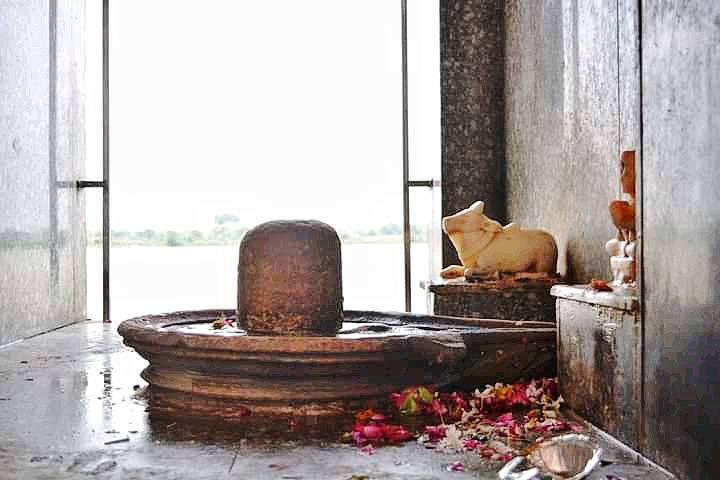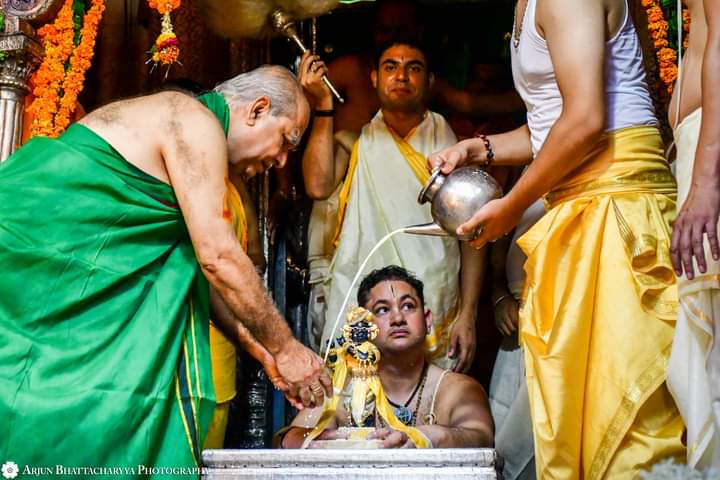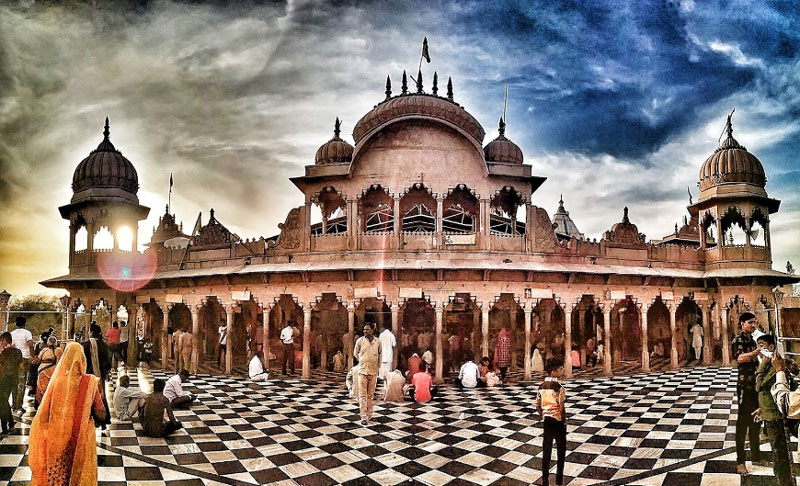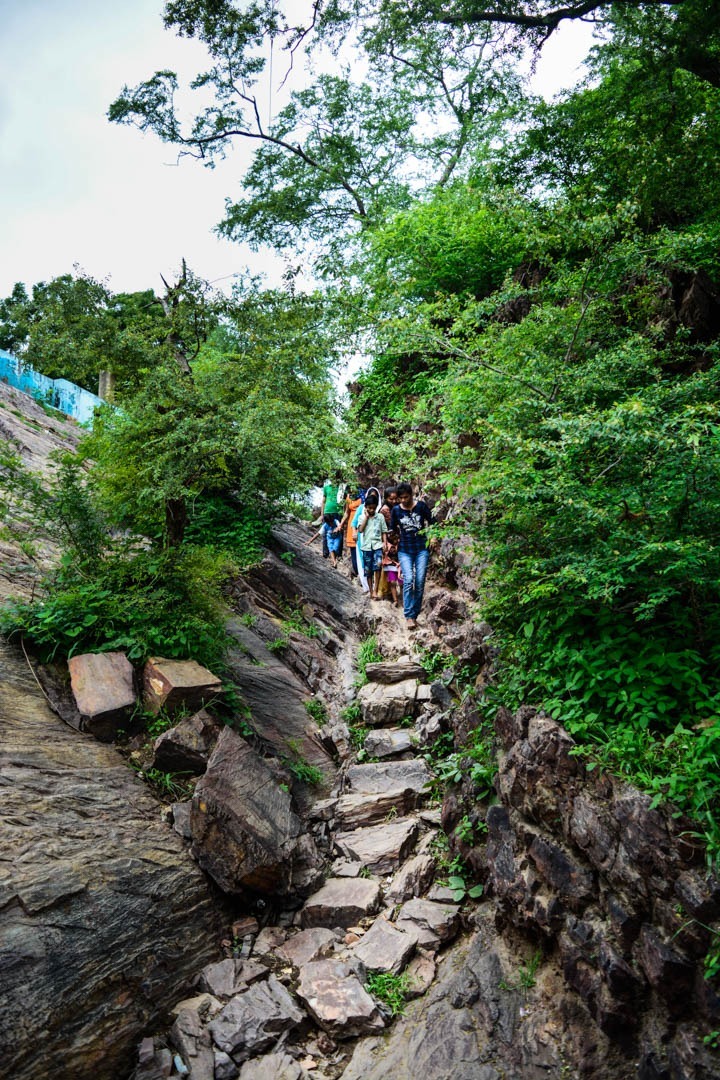- Brajbhoomi, the sacred land associated with Lord Krishna, witnessed a joyous procession of faith in the ancient Mahadev temples on the first Monday of Sawan.
- Mahadev, also known as Yogiraj, has a profound connection with Brajbhoomi and is revered in the region, with four ancient temples dedicated to him.
- Notable Mahadev temples in Brajbhoomi include Rangeshwar, Bhuteshwar, Gopeshwar, and Chintaharan Mahadev, each with its own historical and mythological significance.
2023.07.10 (Vrindavan Today News): Brajbhoomi, the holy land associated with the Divine Pastimes of Shri Krishna, reverberated with spiritual fervor as thousands of devotees embarked on a joyous procession of faith in the ancient Mahadev temples on the first Monday of Shravan. The region, known for its historical and spiritual significance, holds a deep connection with Lord Shiva, who witnessed the divine incarnations of Lord Shri Rama and Shri Krishna.
Mahadev, also known as Yogiraj, shares a profound connection with Brajbhoomi, the Divine Land of Lord Krishna. Mahadev, who witnessed the divine exploits of Lord Rama in the Treta Yuga and Lord Krishna in the Dwapara Yuga, is revered in this region. Situated along the Panchkosiya Parikrama Marg of Mathura, four ancient temples dedicated to Mahadev stand as a testament to his presence. Additionally, Mahadev Dhuni is enshrined in Vrindavan and Mahavan within the Brajbhoomi territory. It is these revered temples that attract devotees on the auspicious first Monday of Sawan.
Although Brajbhoomi is home to numerous Shivalayas, there are certain ancient Mahadev temples that hold great historical and mythological significance. Notable among them are Bhuteswar, Rangeswar, Gopeswara in Vrindavan, and Chintaharan Mahadev in Mahavan. These temples have become focal points for pilgrims and devotees seeking solace and blessings from Lord Mahadev.
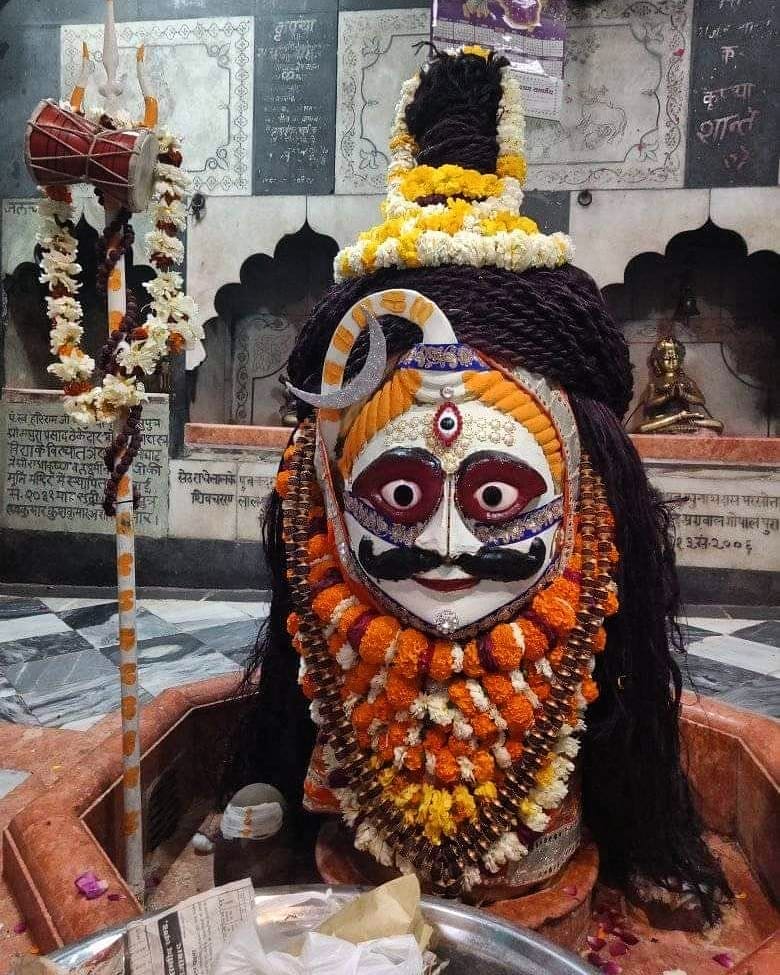
Rangeshwar Mahadev
During the month of Shravan, thousands of devotees come to Mathura’s Rangeshwar Mahadev Temple for worship and reverence. It is believed that performing rituals and worshiping here during the month of Shravan fulfills all desires. The temple is located near Kamsa’s akhada in the old and bustling Antapada area of Mathura, carries a fascinating historical connection to Shri Krishna.
According to legends, after the slaying of the tyrannical King Kamsa during the Dwapara Yuga, a dispute arose between Shri Krishna and his brother Shri Balarama over who dealt the final blow. To resolve the conflict, they took the shelter of Mahadev.
In a mesmerizing scene, Mahadev emerged gracefully from the depths of the earth, as ethereal echoes reverberated throughout the surroundings. With profound serenity, Mahadev conveyed that Krishna’s cunning strategy led to the defeat of Kamsa, while Balarama’s unwavering might sealed his fate. Following this divine event, Mahadev graciously settled in the very spot, captivating hearts as the renowned Rangeshwar Mahadev. To this day, an awe-inspiring ancient temple stands proudly in Rangeswar, drawing devotees who seek solace and offer their devout worship.
This extraordinary event took place in Rangbhumi, giving rise to the name Rangeshwar Mahadev. Since then, the people of Braj have worshipped Lord Rangeshwar with utmost reverence.
Bhuteshwar Mahadev
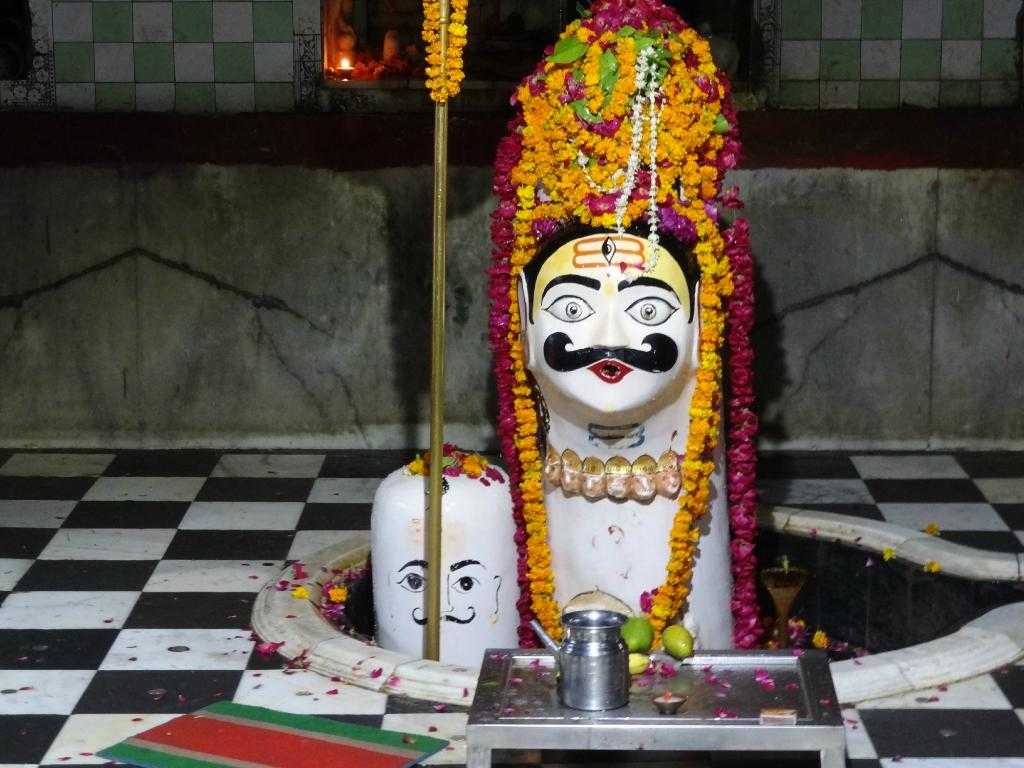
Another prominent temple, Bhuteshwar Mahadev, also known as Shahar Kotwal (City guard), stands near the birthplace of Lord Krishna. The ancient deity of Mahadev enshrined in this temple dates back to the Treta Yuga. According to legend, after the victory in Lanka during the Treta Yuga, Shri Rama had sent his brother Shatrughan to protect the people of Brajbhoomi from the menace of Lavanasura. During this mission, Shatrughan sought the blessings of Bhuteshwar Mahadev, who granted him victory over Lavanasura. Since then, the people of Braj have worshipped Bhuteshwar Mahadev as the city’s guardian deity.
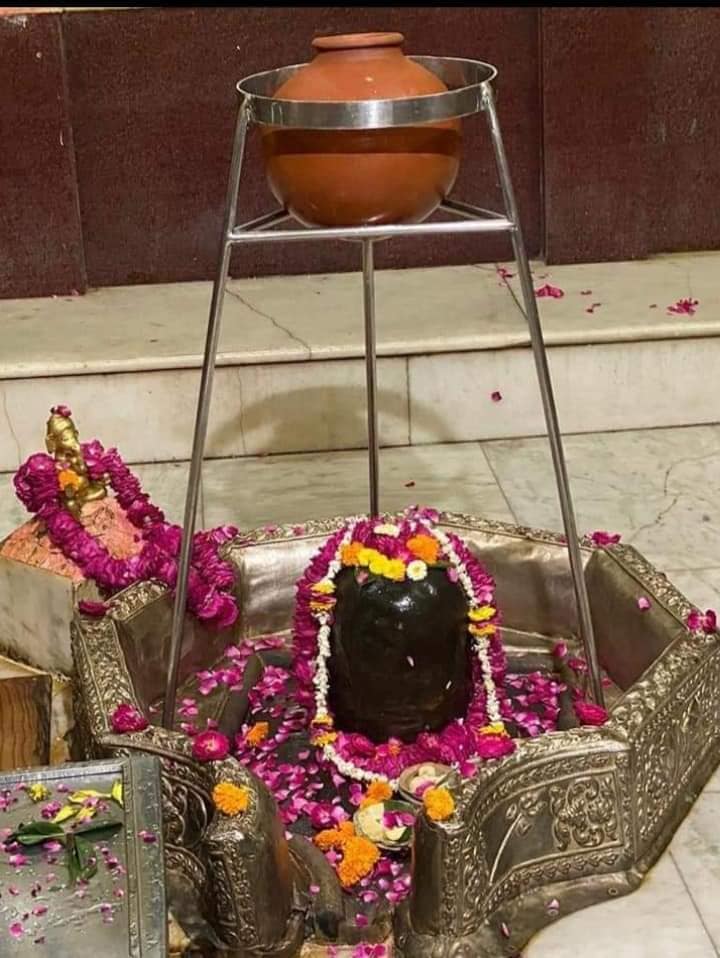
Gopeshwar Mahadev
In the Dwapara Yuga, witnessing Lord Krishna’s celestial dance known as Maharas was prohibited for men. However, Mahadev desired to witness this enchanting spectacle and assumed the form of a gopi to infiltrate Vrindavan. This extraordinary incident gave rise to the renowned Gopeshwar Mahadev temple in the densely populated area of Vrindavan. Devotees gather at this temple during the holy month of Shravan to seek blessings from Bholenath, who manifests himself as a gopi within the sacred premises.
Chintaharan Mahadev
Located in Mahavana (Gokul), Chintaharan Mahadev holds a special place in the hearts of devotees. During the Dwapara Yuga, following the birth of Lord Krishna, Bhole Nath arrived from the Himalayas to visit the divine child. However, upon seeing Mahadev’s awe-inspiring form, Mother Yashoda, overwhelmed with fear, refused to show the face of baby Krishna to him. Bholenath then sat on the banks of the Yamuna in Mahavan adamant that he will not return without having darshan of baby Krishna.
However, Lord Krishna, eager to have darshan of Bholenath started crying and refused to be pacified, Mother Yashoda became worried. She then sent her friends to call Bholenath to have the darshan of Lord Krishna. Upon seeing Bholenath, Lord Krishna stopped crying relieving Mother Yashoda’s of the anxiety. This incident led to the temple being named Chintaharan Mahadev, symbolizing the alleviation of worries.
There is another popular legend associated with the Chintaharan Mahadev. According to the legend, a significant event took place during Lord Krishna’s childhood that led to the establishment of the Chintaharan Mahadev Temple.
It is said that on one occasion, Lord Krishna, mischievous as ever, consumed a handful of soil, much to the concern of his mother, Yashoda. Overwhelmed with worry for her beloved child, Yashoda implored Krishna to expel the soil from his mouth. In response to his mother’s plea, Lord Krishna opened his mouth, and to her astonishment, Yashoda beheld a wondrous vision of the entire universe within.
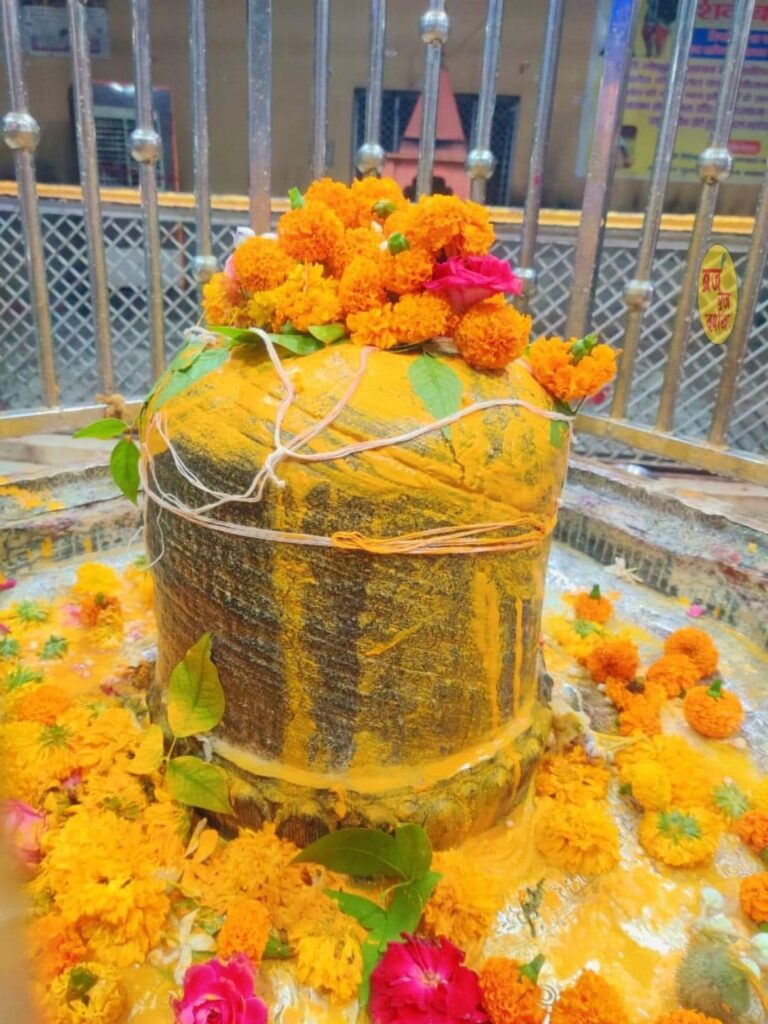
Disturbed by the magnitude of the revelation and seeking solace and guidance, Mother Yashoda urgently called upon Lord Shiva, the benevolent deity known for his compassion and wisdom. Hearing the heartfelt cries of Yashoda, Lord Shiva materialized at the very spot where they stood.
Yashoda, deeply grateful for Lord Shiva’s arrival, performed a ritualistic bathing of the deity using water from the sacred Yamuna River, beseeching him to bless the location and relieve the worries of all devotees who visit there. The narrative of this event is chronicled in the tenth canto of the revered scripture, the Shrimad Bhagavatam.
In response to Mother Yashoda’s earnest request, Lord Shiva bestowed his divine blessings upon the place. He proclaimed that anyone who offers water from the holy Yamuna River at this sacred site would find their worries dispelled and their deepest desires fulfilled.
As the first Monday of Shravan arrived, devotees embarked on a journey of faith, visiting these ancient Mahadev temples of Brajbhoomi. Devotion and fervor filled the air as devotees sought blessings and spiritual solace from Lord Mahadev. The timeless connection between Mahadev and Brajbhoomi continues to inspire and unite people in their pursuit of spiritual enlightenment.


